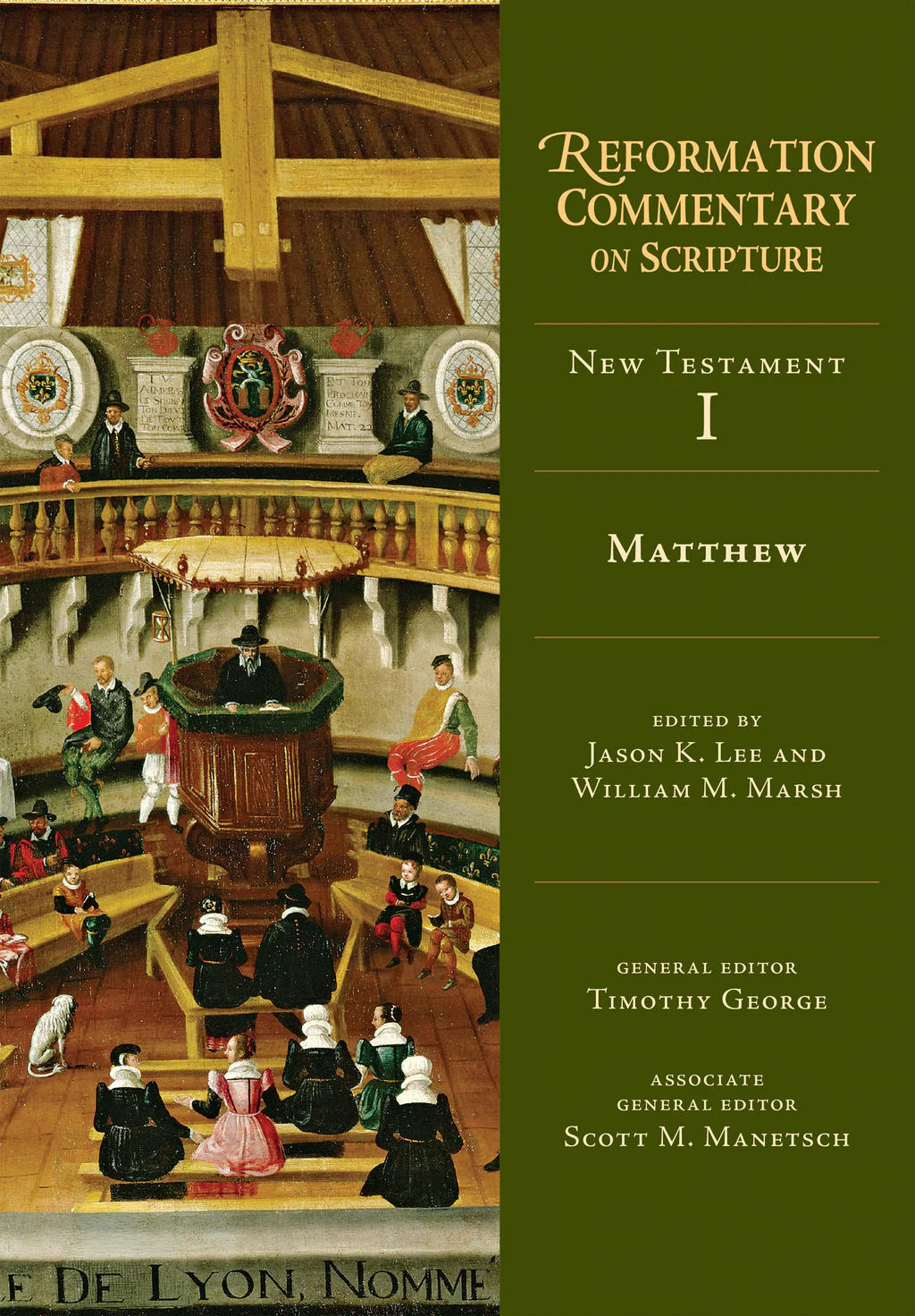
Jason K. Lee and William M. Marsh
Reviewed by: Daniel J. Doleys
Matthew, Reformation Commentary on Scripture, edited by Jason K. Lee and William M. Marsh. IVP, 2021. Hardcover, 400 pages, $44.88. Reviewed by OP pastor Daniel J. Doleys.
The Reformation Commentary on Scripture brings together sixteenth- and seventeenth-century exegetes, theologians, and pastors in one volume. It does for the Reformers what the Ancient Christian Commentary Series did for the Church Fathers.
The body of the commentary divides the biblical text into major sections of a few paragraphs and includes an introduction to its main interpretive issues. The text is further broken down by paragraph, and the commentary of several authors is given. Each quotation is neatly set off by the author’s name, so it is easy to identify where one author’s words end and another’s begin. The source of each quotation is included to aid further study. The quotations of the Reformers are taken from standard editions and new translations by the editors, Jason Lee and William Marsh, both of Cedarville University. After working through all of Matthew, short biographies for each interpreter are provided. This section is especially helpful for many of the lesser-known commentators cited.
While a few Roman Catholic interpreters are included, such as Erasmus and Cardinal Cajetan, the focus is on Protestantism and its distinct tradition of interpretation. There is a wide variety of interpreters from different communions. In the Matthew volume, it is not surprising to find the leading men of the magisterial Reformations cited most often. From the Lutheran tradition, Martin Luther himself is most common, but Philip Melanchthon and Martin Chemnitz are also regularly included. From the broader Reformed tradition, John Calvin is ubiquitous, while Theodore Beza, Martin Bucer, Heinrich Bullinger, and Ulrich Zwingli repeatedly appear. It was also thrilling to see many citations from Wolfgang Musculus and Johannes Oecolampadius. There are also worthy inclusions from the English Reformers including Thomas Cranmer, Hugh Latimer, William Perkins, and Thomas Watson, as well as several early Baptists. Menno Simmons appears as the primary representative of the Anabaptists. Several women interpreters are also included. Another strength is the inclusion of passages not just from commentaries, but also from sermons of the period.
It is hard to offer a substantial critique of an edited commentary in such a short review, but it should be noted that on debated passages in Matthew, the editors intended more to guide the reader toward what is, in their view, a faithful interpretation than to represent the full variety of sixteenth- and seventeenth-century readings. The variety of positions on the continual virginity of Mary are not present in the commentary on Matthew 1:22–23 or 13:55. The controversy over the identity of “this rock” in Matthew 16:18 is better covered, yet it still lacks the full spectrum of Protestant and non-Protestant views to fully grasp the nature of this important debate during the Reformation period.
Overall, this is an excellent volume and can serve a minister or lay reader of Matthew in three ways. First, as an important complement to modern commentaries; both as a window into the interpretive patterns of our Reformed fathers and as a balance to the technical nature of today’s commentaries. Second, this volume will save you time and much money by presenting the best the Reformation had to offer without needing to purchase an author’s complete works. And third, it will whet your appetite for Protestant interpreters beyond the standard Luther and Calvin and drive you to dig deeper into the riches of the Reformed interpretive tradition.
March 30, 2025
On the Trail with a Missionary
March 23, 2025
Midnight Mercies: Walking with God Through Depression in Motherhood
March 16, 2025
March 09, 2025
Zwingli the Pastor: A Life in Conflict
March 02, 2025
February 23, 2025
African Heroes: Discovering Our Christian Heritage
February 16, 2025
© 2025 The Orthodox Presbyterian Church